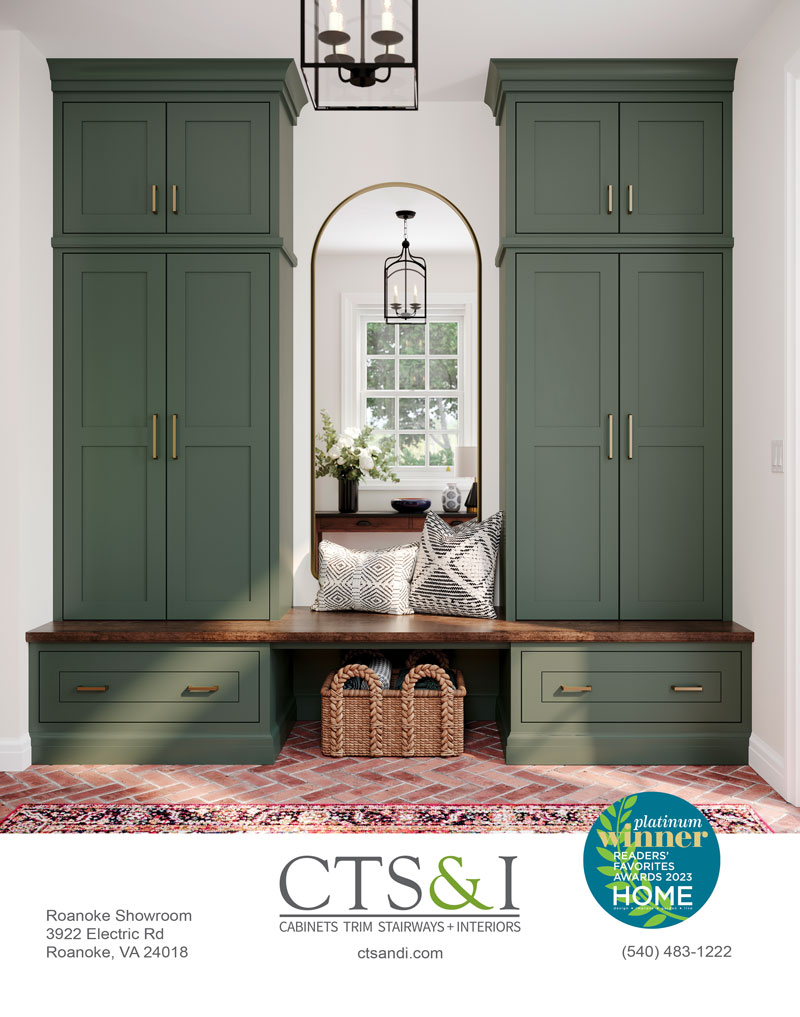Flat, Functional, Fabulous! Shape-shifting Tables are Essential for Home Entertaining
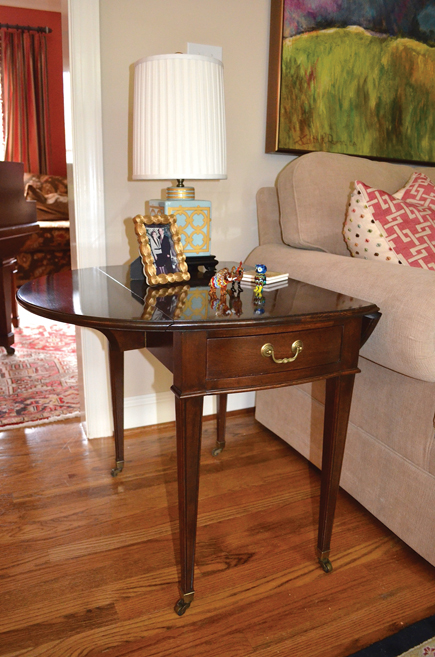 Our home furnishings provide not only utility, but they can also enhance the best use of space in our homes. So it’s no surprise that homeowners through the ages have appreciated smart design and versatility in their furnishings. Though seemingly the stuff of science fiction, shape-shifting transformable tables have been around for hundreds of years—and they’re still desirable today in our modern age of multitasking.
Our home furnishings provide not only utility, but they can also enhance the best use of space in our homes. So it’s no surprise that homeowners through the ages have appreciated smart design and versatility in their furnishings. Though seemingly the stuff of science fiction, shape-shifting transformable tables have been around for hundreds of years—and they’re still desirable today in our modern age of multitasking.
In fact, a foldable, extendable or expandable table might be just the thing to help take some of the hassles out of hosting this holiday season.
Fold
When out on the campaign, 18th- and 19th-century military officers traveled with ingenious portable furniture characterized by their clever hardware mechanisms that allowed the furniture to be quickly assembled or dismantled for easy transport. These sturdy pieces were often made of mahogany or teak—dense, weather-resistant woods that were also resistant to moisture and insects—and featured brass handles, locks and angled pieces to protect their corners. Something about a campaign table evokes the feeling of high-class camping or going on safari (can you remember the ruggedly romantic Robert Redford-meets-Ralph Lauren tent decor in the movie “Out of Africa?”).
Any table specially made to break down or fold for portability can be described as a “campaign table,” but nowadays, we tend think of a portable serving tray that comes with a stand. In appearance, a tray table looks like a single unit, but the tray removes, freeing it up for other purposes such as transporting beverages to guests. You can find tray tables in different sizes and heights, and they are most often round or rectangular, on either a tripod-style base or a crisscrossed X-shaped frame with a hinge in the middle.
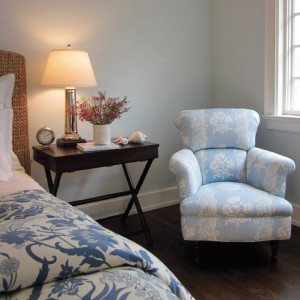 Sometimes called a “butler’s tray table,” tray tables can be handsomely used as a bedside table, a small desk or even as a bar caddy. A pair by the sofa comes in handy for an occasional informal dinner. By the front door, a tray table provides a convenient perch for keys, cell phones and mail. The pieces can be stowed out of the way into a corner or closet when not in use.
Sometimes called a “butler’s tray table,” tray tables can be handsomely used as a bedside table, a small desk or even as a bar caddy. A pair by the sofa comes in handy for an occasional informal dinner. By the front door, a tray table provides a convenient perch for keys, cell phones and mail. The pieces can be stowed out of the way into a corner or closet when not in use.
Other types of folding tables, with legs that fold up against the tabletop, are useful to have in the home entertainer’s arsenal, too. The best things these types of tables have going for them is that they tend to be lightweight, making it easy to keep one (or several!) stashed in a closet until called to duty. Card tables, folding banquet tables and personal TV trays are all examples of folding tables that can fulfill a quick need for extra seating during a big family dinner or game night.
Extend
Drop-leaf tables (sometimes called a “Pembroke” table after the Earl of Pembroke, a late 17th-century amateur architect) feature one or two hinged leaves supported by articulated legs, arms or brackets. When the table has a leg that swings out from the center to support a leaf, it’s called a “gate leg” table. Often, carvings or decorative turned-wood motifs highlight the undercarriage mechanics of a gate-leg table.
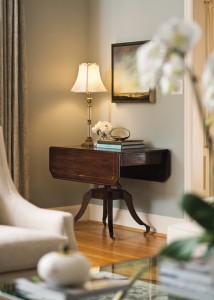 If your current furniture arrangement feels like it’s missing something, a multi-functional drop-leaf or gate-leg table might be the item you need. Its leggy, architectural form commands attention, wherever it is. It’s up to you to decide if you prefer the look of your table in the “leaf down” or “leaf up” position. Leaves down, the tabletop is narrower and can pass for a console, neatly tucking in behind the sofa or filling a need in any narrow space. Or, when the table is in the leaf-up position, you can pull up a side chair and use it as a handsome writing desk. Stacks of art books or a collection of silver picture frames can be showcased in the living room. In the bedroom, it can serve as a vanity or bedside table. Then, when needed, of course it can be used as an additional dining table at your next big family dinner. Some drop leaf and gate leg tables have handy drawers in their center section, offering a place to store tabletop dining essentials (or TV remotes, when used in the family room).
If your current furniture arrangement feels like it’s missing something, a multi-functional drop-leaf or gate-leg table might be the item you need. Its leggy, architectural form commands attention, wherever it is. It’s up to you to decide if you prefer the look of your table in the “leaf down” or “leaf up” position. Leaves down, the tabletop is narrower and can pass for a console, neatly tucking in behind the sofa or filling a need in any narrow space. Or, when the table is in the leaf-up position, you can pull up a side chair and use it as a handsome writing desk. Stacks of art books or a collection of silver picture frames can be showcased in the living room. In the bedroom, it can serve as a vanity or bedside table. Then, when needed, of course it can be used as an additional dining table at your next big family dinner. Some drop leaf and gate leg tables have handy drawers in their center section, offering a place to store tabletop dining essentials (or TV remotes, when used in the family room).
Tilt
Originally used for teatime, a tilt-top table creates a particular subcategory of the “extendable” sort of table. The top of a tilt-top table is hinged on a central pedestal and can be kept in a space-saving vertical position when not in use, and then transformed to a horizontal surface as needed. When placed against the wall in its upright position, a tilt-top table takes up almost no space at all. The tabletops of tilt-top tables often feature elaborate scrollwork edges and inlaid patterns and become a decorative focal point when displayed in “vertical mode.”
Expand
Many dining tables are built so homeowners can have a customizable “one-size-fits-all” option to suit family gatherings large or small. An expandable table spreads apart so “leaves” (segments) can be inserted into it, extending the table from a smaller size to a long, banquet-length dining table.
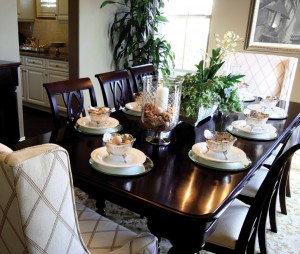 Where and how to store unused table leaves is something you’ll need to consider. Ideally, store extra table leaves near the table (or in the same environment as the table) to ensure that the leaf will not warp, swell or contract differently from the table. So, be aware that any moisture/temperature differential in a basement or attic could take its toll on a wood table leaf and prevent it from inserting back into the table correctly next time you need it. Store leaves lying flat, not propped on end, to protect the integrity of the wood and prevent warping. Some folks hide unused table leaves under a nearby sofa or guest bed, wrapped in a soft protective covering. Some tables are designed to include a hiding place to store the leaves, eliminating this problem altogether.
Where and how to store unused table leaves is something you’ll need to consider. Ideally, store extra table leaves near the table (or in the same environment as the table) to ensure that the leaf will not warp, swell or contract differently from the table. So, be aware that any moisture/temperature differential in a basement or attic could take its toll on a wood table leaf and prevent it from inserting back into the table correctly next time you need it. Store leaves lying flat, not propped on end, to protect the integrity of the wood and prevent warping. Some folks hide unused table leaves under a nearby sofa or guest bed, wrapped in a soft protective covering. Some tables are designed to include a hiding place to store the leaves, eliminating this problem altogether.
Having versatile, expandable furniture can be the difference between feeling cramped versus comfortable in your home any time of year, but during the holidays especially. One transforming table can serve so many different needs in your home that you may just decide you need several.
campaign table, card tables, drop-leaf tables, expanding tables, folding tables, home furnishings, Pembroke table, tilt-top tables
